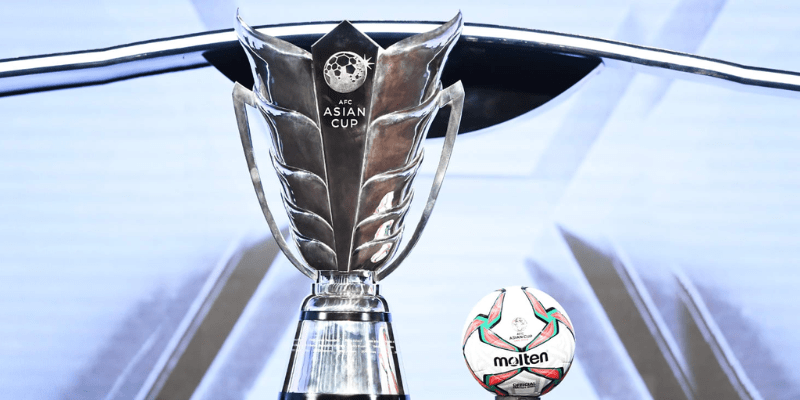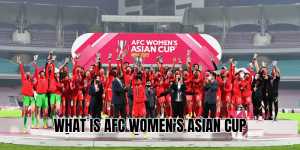In this article, FreeKickSEO will break down how does Asian Cup qualifying work, revealing the current process teams in Asia use to make it into the AFC Asian Cup finals. We’ll walk through the format, rounds, key rules, and recent changes—everything you need to know to follow the Road to Asian Cup like an insider.
What is the Asian Cup and why the qualification matters

The AFC Asian Cup is Asia’s top international men’s national team competition, held every four years. Since 2019, the finals feature 24 teams. Qualifying isn’t just a matter of prestige—it shapes which nations get a global stage, determines rankings, and often intertwines with World Cup qualifying. Fans of major teams like Japan, Australia, Iran, or Saudi Arabia watch the qualifiers closely, because a slip-up here can cost you an entire tournament.
The current qualification structure for the 2027 Asian Cup
Here’s a full view of how does Asian Cup qualifying work for the 2027 edition, including the relationship with the 2026 FIFA World Cup qualifiers. The process involves four rounds, where the first two rounds serve both competitions, and the last two are specific to filling out the Asian Cup field.
Below is the format step-by-step:
Key Rounds and how teams progress
First Round
- Which teams: The 20 lowest-ranked AFC teams (ranked 27 to 46) according to FIFA/AFC rankings.
- Format: Home-and-away over two legs (i.e. each pair of teams plays twice, once at home for each side).
- Outcome:
- The 10 winners advance to the Second Round.
- Among the losers, the best-ranked losing team is given a direct path to the Third Round of Asian Cup qualifying.
- The remaining losing teams (worst-ranked) go into a Play-off Round to try to still get into the Third Round.
Second Round
- Which teams: 36 teams total — the 26 highest-ranked teams (ranked 1–26) plus the 10 winners.
- Format: Nine groups of four teams each. Round robin home-and-away matches (each plays the others in the group twice).
- Outcome:
- The top two teams in each group (9 group winners + 9 runners-up = 18 teams) directly qualify for the 2027 AFC Asian Cup finals. Also, these teams move forward in the World Cup qualifying path.
- The other teams (those finishing 3rd or 4th) don’t drop out—they advance to the Third Round of Asian Cup qualification.
Play-off Round
- Purpose: Give a second chance to several teams that lost in the First Round but still deserve a shot based on ranking or performance.
- Which teams: The worst-ranked losing teams.
- Format: Two-legged home-and-away ties. Winners progress to the Third Round.
Third Round
- Which teams: A mix of:
- The best-ranked losing team. Third- and fourth-placed teams. Winners from the Play-off Round
- Format: 24 teams divided into six groups of four. Home-and-away round robin. Each plays six matches (3 home, 3 away).
- Outcome: Only the group winners (six teams). They join the 18 teams that already qualified from the Second Round + the host country.
Special cases & rules worth knowing

- Automatic qualification for the host country. For 2027, Saudi Arabia is host, so its place is guaranteed.
- Ranking of “best losing teams.” When a team loses in the First Round, some losing teams are ranked to be eligible to skip the Play-off or get into later rounds. Performance & FIFA/AFC ranking are key.
- Home & away format applies in all rounds except where ties or groups; aggregate goals and away-goals rules may apply depending on AFC regulations.
- Intertwined with World Cup qualifying. The first two rounds serve dual purpose: they are joint qualifiers for both the 2026 World Cup and the 2027 Asian Cup. This makes matches especially intense.
Recent changes & why they matter
- Tournament expansion & alignment. Since 2019, the Asian Cup finals expanded to 24 teams. This required revamping qualifiers to give more teams chances.
- Joint qualifying with FIFA World Cup. To reduce fixture congestion and make matches more meaningful, the first rounds now serve both qualifications. This raises stakes early for teams that in previous cycles had more gradual paths.
- Play-off rounds & best losing slots. Teams that lose early aren’t immediately eliminated; some are saved by ranking or given a chance through play-offs. Thisller/lesser-ranked nations more opportunities.
Example: How a mid-rank team might qualify
To demonstrate how does Asian Cup qualifying work in practice, here’s a scenario:
- Country X is ranked, say, 30th in Asia → it enters in the First Round.
- Wins its two-leg tie → advances to Second Round as one of the 10 winners.
- In Second Round, it finishes second in its group → that gives direct qualification to the Asian Cup. No need for Third Round.
Alternatively, if Country X lost in Round One but had a decent performance, it might be among the best losing teams, skip the Play-off to enter Round Three, then win its group in Round Three to qualify.
Impact & what fans should watch

- Every match in the early rounds is now more critical because of the joint qualifiers. Upsets carry more consequence.
- Teams with solid rankings have a safety net, but lower-ranked nations have to perform well or risk being sidelined early.
- Hosting helps: the host nation gets automatic entry, even if its performance is lagging. So Saudi Arabia, hosting in 2027, doesn’t have to go through the full grind.
Conclusion
How does Asian Cup qualifying work is a story of evolution, ambition, and increasing competition. The road to 2027 is longer, tougher, and more meaningful, dual-purpose matches for the World Cup and Asian Cup, play-offs, best losing spots, and group winners all pulling their weight, this structure rewards consistency, ranking, and gutsy performances.
Want to stay up to date? Keep tabs on the match fixtures, group standings, and which teams are in the best losing-team slots. FreeKickSEO will be there covering every twist. If you like this breakdown, check out our full guide to the World Cup qualifying in Asia next—or get stats on your favorite national team’s path to the finals.






